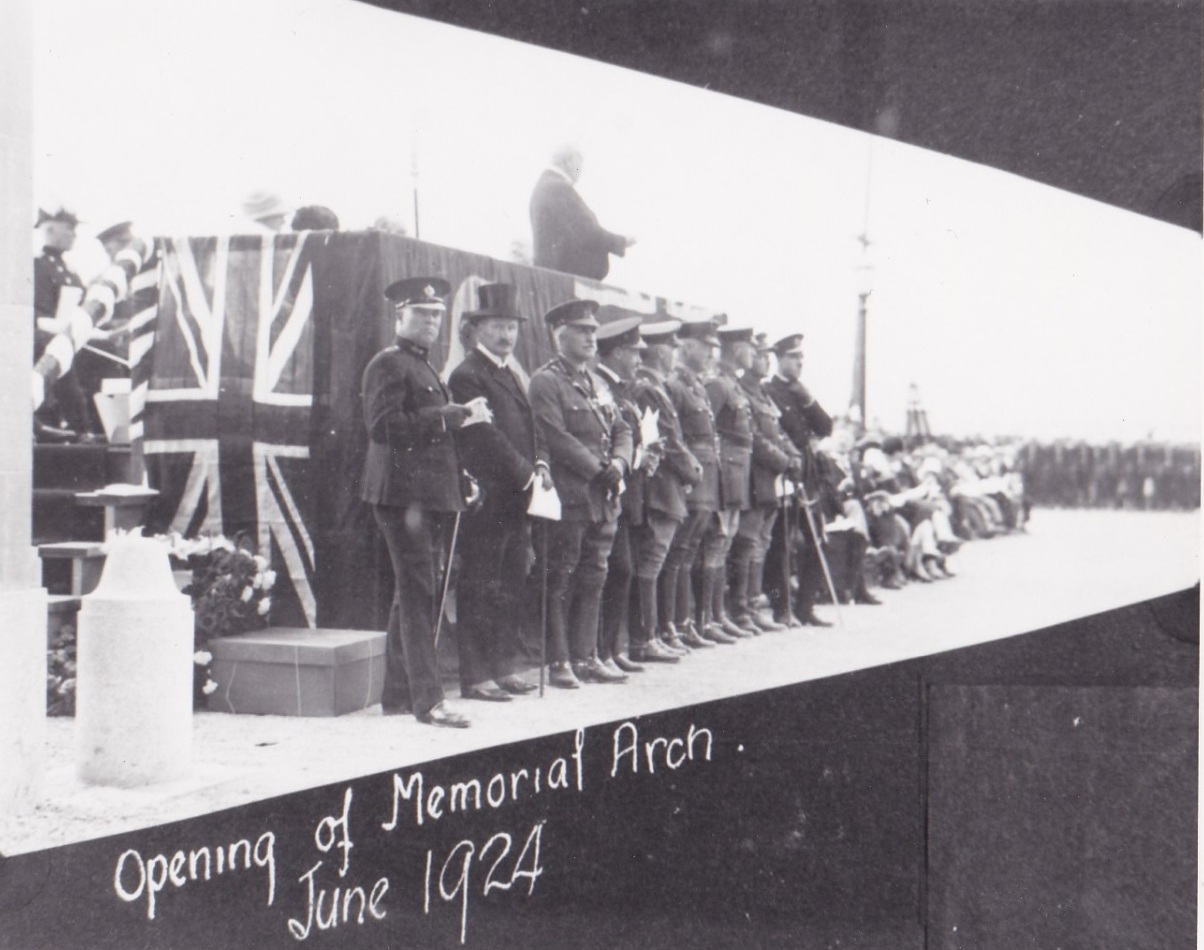
The Royal Military College of Canada, Kingston 1921 –1925: Erecting the Memorial Arch
Pt 7
Military engineering consisted mostly of building fixed defences of the more sophisticated World War I model and we spent what seemed like endless hours digging trenches and putting up and dismantling barbed wire entanglements on Barriefield Common. In the later years we did some pontoon bridging and demolitions using explosive. Most of this was pretty elementary in comparison with the tasks demanded of Army engineers in the field during World War II.
There was one unusual and interesting diversion towards the end of our recruit year.
The R.M.C. Club had raised the funds to erect the Memorial Arch commemorating ex-cadets who had fallen in war, and there were differences of opinion as to which was the best site for it.
MORE…
Some thought it should be at the main entrance, others that it should be further along the driveway between the Commandant’s House and the gate into the Inner Enclosure. The military engineering department decided to erect a full scale model of a light wooden frame covered with canvas on the latter site to get an impression of how it would look, and our class was given this task during practical engineering periods. The model was almost complete, with the last stretches of canvas being tacked at the top by some of our members working high on the frame, when a sudden gust of wind started the whole structure tumbling. As it came crashing down, our class mates seized the branches of overhanging trees and hung like monkeys until they could be assisted safely to the ground. There were a few bruises and sprains, but fortunately no one was seriously hurt. Enough of the model had stood long enough for a decision to be taken that the arch should be sited at the main entrance.
The serious shortcomings in military instruction were the lack of study of military history and strategy or biographies of the great captains, and a totally unimaginative approach to the subject of tactics. There was an adequate library at the College which included most of the military classics for those who cared to read them, but there was little encouragement to do so given by the military staff. Instruction in Tactics consisted of memorizing the “principles of war” and reading précis which were a paraphrase of the current Field Service Regulations. There were no sandtable exercises, no tactical exercises without troops conducted on the ground, nothing to stimulate thinking and make a cadet realize that the solving of a tactical problem required the careful balancing of many complex factors by putting their brains to work. The writer cannot recall “air power” ever being mentioned. Though still in its infancy, there were plenty of clues from World War I that it was to become a major influence in our time. It is true that a number of the class who graduated a year before ours and some of our own class took commissions in the R.C.A.F., but it is believed they did so because of the challenge of flying. It was certainly not because of what they learned about the future potential of air power at the R.M.C.
When, after attending the Staff College at Camberley, I was appointed to the staff at the R.M.C. in the spring of 1938, under the aegis of the then Colonel Ken Stuart, a serious effort was made to correct deficiencies in the course. Though ostensibly appointed as “Instructor in Artillery”, I was informed that the military staff was to be reorganized, another officer was to be put in charge of the Artillery Department, and I was to instruct in International Affairs, Strategy and Tactics. We expanded the library, adding multiple copies of standard works on International Affairs, and subscribing to journals and papers which had authoritative foreign reporting, and set studies, discussion groups and papers on current problems. Tactics I taught entirely by exercises, in good weather by tactical exercises without troops out of doors on selected ground, and in the winter through the medium of sandtable models. Many of the cadets who attended the College during the short time I was there rendered outstanding service as commissioned officers during World War II. I like to think that the tactical instruction I gave them, designed to make them think through a tactical problem, was of value to them, but I cannot be the judge of that.
I have attempted in the preceding pages to give an general outline and commentary on the educational and military training programs at the R.M.C. without relating it to specific years. It remains to deal with our general day-to-day life at the College in sequence.

